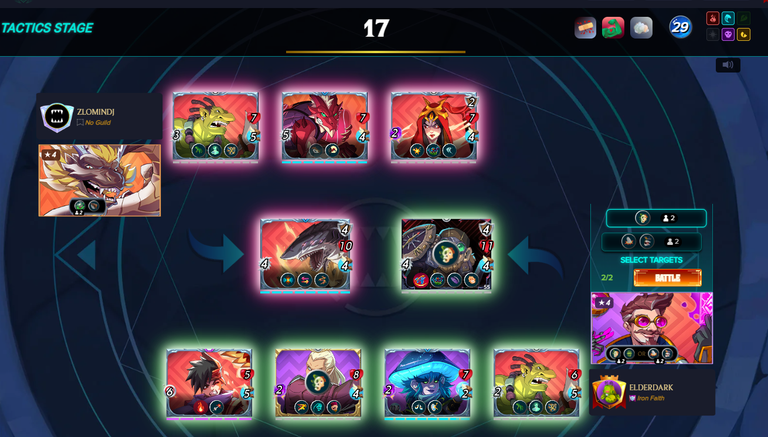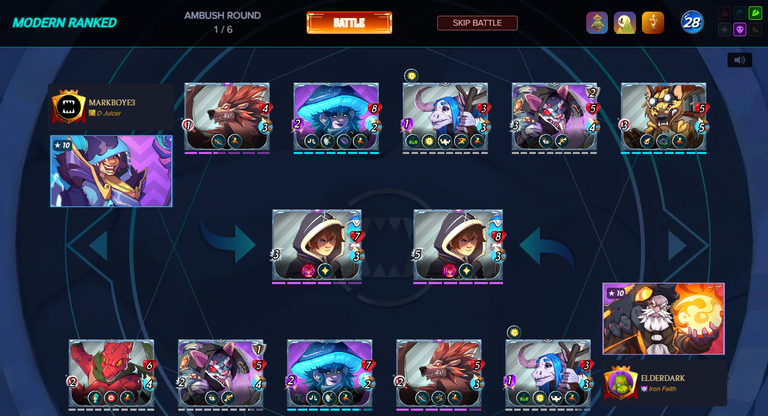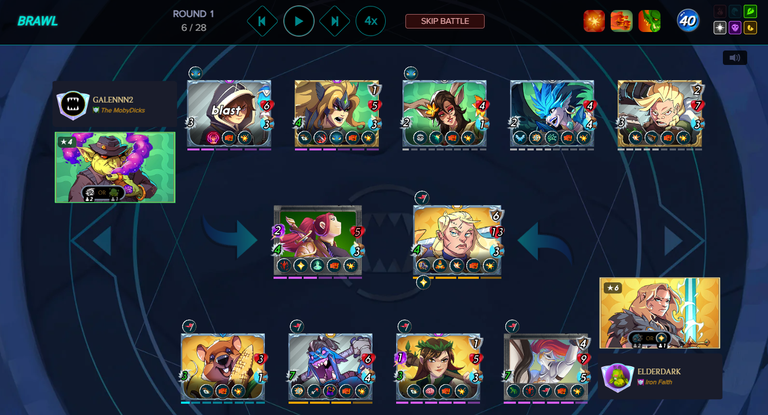[EN]
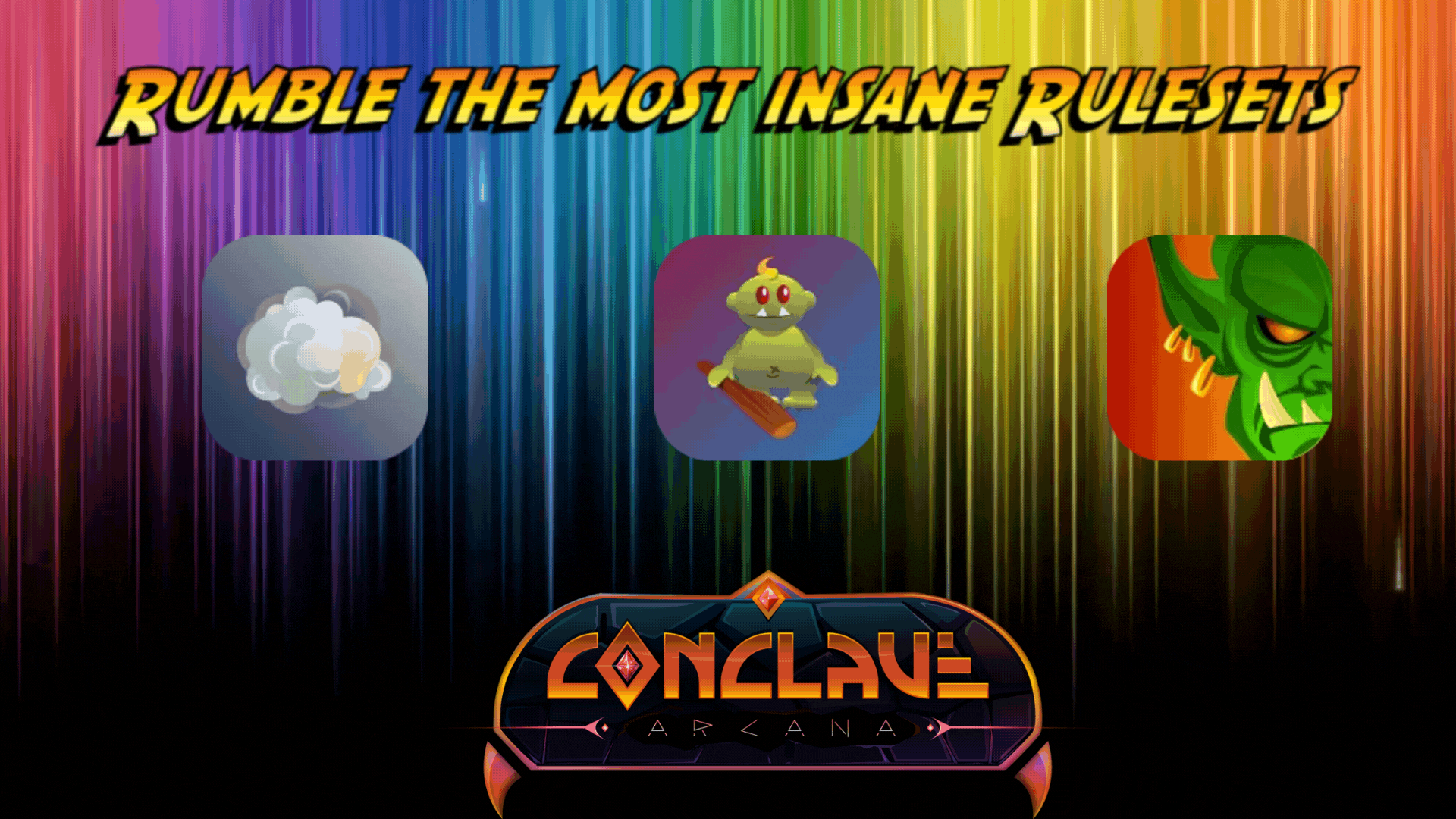
Hello Splinter Fanatic!
Splinterlands is a game full of surprises and strategies. Each battle is unique, as the performance of monsters and archons can vary greatly depending on several factors, such as rulesets, the release of new cards, and the introduction of new archons. This constant dynamic requires players to pay attention and adapt to each confrontation.
The Splinterlands universe is constantly expanding, always bringing new features such as promotional cards, limited editions, and special events. Recently, the game announced the arrival of the next cards in the Conflicts collection, which promise to further renew strategies on the battlefield. In the official post, you can check out all the details about this new phase of Conflicts and prepare for the upcoming battles.
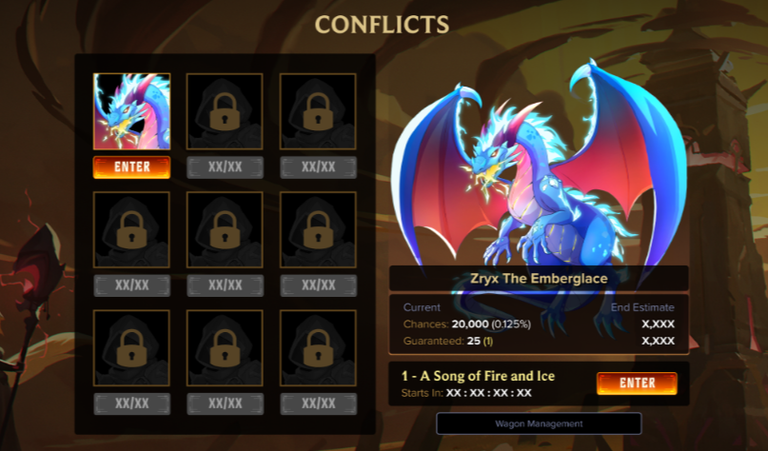
However, the Splinterlands Community Engagement Challenge post is about Rulesets Rumble, which can be about Fog of War, Little League, or Up Close & Personal. Each Ruleset has its own particularities and best strategies to be used, and it is up to the player to use the best ones.
Fog of War

The Fog of War ruleset disables the Sneak, Snipe, and Opportunity abilities, making the battlefield more straightforward and predictable. With these abilities disabled, melee damage monsters can only attack from the first position or the second position if they have the Reach ability, or if the frontline monster has Flank.
For this reason, monsters with ranged or magical damage become more advantageous options in this type of match. The key to winning is to choose a tank with high HP and appropriate defensive abilities, such as Void Armor, Void, or Silence to resist magical damage, and Shield or Return Fire to deal with ranged attacks.
In the following battle, the Fog of War ruleset was active. To counter this, I fielded a main tank with magic resistance thanks to the Void ability, as well as good HP and armor. Right behind him, I positioned a melee monster with the Reach ability, allowing him to attack from the second position. The other units focused on magic and ranged damage, ensuring that all monsters contributed to attacks. This strategy was more efficient than my opponent's, who did not optimize the use of his monsters and ended up wasting offensive potential.
Click on the image to watch the entire battle.
Little League

The Little League ruleset is restrictive, as it limits the lineup to monsters and archons with a mana cost of 4 or less. This makes it essential to have a well-balanced collection, especially with low-mana cards and good abilities.
In battles with this ruleset, I usually prioritize having as many units on the field as possible. This strategy is even more effective when the battle also features a reduced amount of available mana, as filling the field with multiple monsters can increase your resistance and offensive capabilities throughout the fight.
When choosing units, I prefer to prioritize monsters with the highest damage, HP, and armor values within the mana limitation. Archons or monsters that grant armor bonuses or +1 HP to the team are also extremely valuable in this scenario, as they increase the team's durability without compromising the cost limit.
Up Close & Personal

The Up Close & Personal ruleset completely transforms the dynamics of the match, allowing only monsters with melee damage. This means that monsters with magic or ranged damage generally cannot be used, except for a few that, in addition to their main damage, also have additional melee damage.
In this type of battle, it is not always easy to position monsters so that they can all attack effectively. Since melee attacks are usually only possible from the front line (or from the second position with abilities such as Reach), it is essential to think carefully about the composition to ensure that as many monsters as possible contribute offensively.
In the battle I present below, all my monsters were positioned so that they could attack. For the front line, I chose one of the best tanks available for this type of confrontation, a unit with high HP, good armor, and the powerful Shield ability, which reduces enemy melee damage by half.
This match took place during Brawl, where each player can select their gladiator. My choice was Marisol Contuma, an excellent option in this ruleset. She has the Inspire ability, which increases the melee damage of all allies by +1, creating perfect synergy for a battle purely with melee monsters.
The secret here is simple: assemble a team where all monsters can attack and, whenever possible, include units with sturdy armor. Since melee attacks need to break through armor before hitting HP, this provides an extra line of defense that can make all the difference.
Two of the battles used as examples took place in the current Brawl, and fortunately, I managed to win all my matches—a rare and challenging feat, especially considering that I am playing in Tier 5, where the best guilds in the game face off. At this level, every detail counts: from the choice of gladiator to the strategic positioning of monsters. That's why winning every match in a high-level Brawl is a significant and rewarding achievement.

That was my entry for this week's Splinterlands Community Engagement Challenge on Splinterlands. I hope you enjoyed this post, which was made with a lot of love.
If this post was useful, please consider leaving your upvote, comments, and even reblogging it on your pages! Thank you very much!
Images: @splinterlands
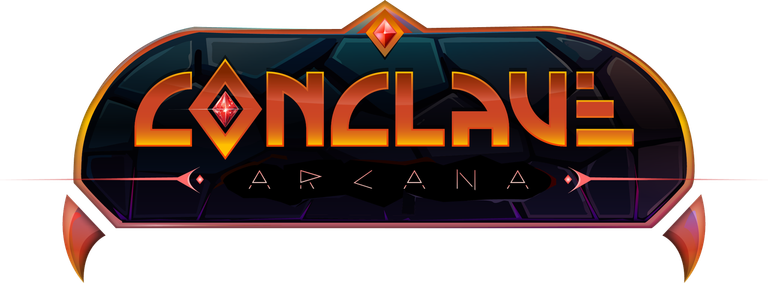
[PT]

Olá Splinter Fanático!
Splinterlands é um jogo repleto de surpresas e estratégias. Cada batalha é única, pois o desempenho dos monstros e archons pode variar bastante de acordo com diversos fatores, como os rulesets, o lançamento de novas cartas e a introdução de novos archons. Essa dinâmica constante exige dos jogadores atenção e adaptação a cada confronto.
O universo de Splinterlands está em constante expansão, sempre trazendo novidades como cartas promocionais, edições limitadas e eventos especiais. Recentemente, o jogo anunciou a chegada das próximas cartas da coleção Conflicts, que prometem renovar ainda mais as estratégias no campo de batalha. No post oficial, você pode conferir todos os detalhes sobre essa nova fase do Conflits e se preparar para as próximas disputas.

Mas, o post do Splinterlands Community Engagement Challenge é sobre Rulesets Rumble, que podem ser sobre os Fog of War, Little League, or Up Close & Personal. Cada Ruleset tem sua particularidade e melhores estratégias a serem utilizadas cabe ao jogador utilizar a melhor delas.
Fog of War

O ruleset Fog of War desativa as habilidades Sneak, Snipe e Opportunity, tornando o campo de batalha mais direto e previsível. Com essas habilidades inutilizadas, os monstros de dano melee só conseguem atacar a partir da primeira posição ou da segunda, caso possuam a habilidade Reach, ou se o monstro da linha de frente tiver Flank.
Por esse motivo, monstros com dano à distância ou mágico tornam-se opções mais vantajosas nesse tipo de partida. A chave para vencer está em escolher um tanque com alto HP e habilidades defensivas adequadas, como Void Armor, Void ou Silence para resistir ao dano mágico, e Shield ou Return Fire para lidar com ataques à distância.
Na batalha a seguir, o ruleset** Fog of War** estava ativo. Para enfrentá-lo, escalei um tanque principal com resistência mágica graças à habilidade Void, além de possuir um bom valor de HP e armadura. Logo atrás, posicionei um monstro melee com a habilidade Reach, permitindo que ele atacasse da segunda posição. As demais unidades foram focadas em dano mágico e ranged, garantindo que todos os monstros contribuíssem com ataques. Essa estratégia foi mais eficiente do que a do meu oponente, que não otimizou o uso de seus monstros e acabou desperdiçando potencial ofensivo.
Clique na Imagem para Assistir a Batalha Completa
Little League

O ruleset Little League é do tipo restritivo, pois limita a escalação apenas a monstros e archons com custo de mana igual ou inferior a 4. Isso torna essencial ter uma coleção bem equilibrada, especialmente com cartas de baixa mana e boas habilidades.
Em batalhas com esse ruleset, costumo priorizar o maior número possível de unidades no campo. Essa estratégia é ainda mais eficaz quando a batalha também apresenta uma quantidade reduzida de mana disponível, já que encher o campo com múltiplos monstros pode aumentar sua resistência e capacidade ofensiva ao longo da luta.
Na escolha das unidades, prefiro priorizar monstros com o maior valor de dano, HP e armadura dentro da limitação de mana. Archons ou monstros que concedem bônus de armadura ou +1 de HP para o time também são extremamente valiosos nesse cenário, já que aumentam a durabilidade da equipe sem comprometer o limite de custo.
Up Close & Personal

O ruleset Up Close & Personal transforma completamente a dinâmica da partida, permitindo apenas monstros com dano melee. Isso significa que monstros com dano mágico ou à distância geralmente não podem ser utilizados, exceto alguns que, além de seu dano principal, também possuem dano melee adicional.
Nesse tipo de batalha, nem sempre é fácil posicionar os monstros de forma que todos consigam atacar efetivamente. Como os ataques melee normalmente só são possíveis da linha de frente (ou da segunda posição com habilidades como Reach), é essencial pensar bem na composição para garantir que o máximo de monstros contribua ofensivamente.
Na batalha que apresento a seguir, todos os meus monstros foram escalados de maneira que pudessem atacar. Para a linha de frente, escolhi um dos melhores tanques disponíveis para esse tipo de confronto, uma unidade com alto HP, boa armadura e a poderosa habilidade Shield, que reduz o dano melee inimigo pela metade.
Essa partida aconteceu durante o Brawl, onde cada jogador pode selecionar seu gladiador. A minha escolha foi Marisol Contuma, uma excelente opção nesse ruleset. Ela possui a habilidade Inspire, que aumenta o dano melee de todos os aliados em +1, criando uma sinergia perfeita para uma batalha puramente com monstros melee.
O segredo aqui é simples: montar uma equipe onde todos os monstros consigam atacar e, sempre que possível, incluir unidades com armadura robusta. Como os ataques melee precisam quebrar a armadura antes de atingir o HP, isso garante uma linha de defesa extra que pode fazer toda a diferença.
Duas das batalhas usadas como exemplo aconteceram no Brawl atual, e felizmente consegui vencer todas as minhas partidas — um feito raro e desafiador, especialmente considerando que estou jogando no Tier 5, onde as melhores guilds do jogo se enfrentam. Nesse nível, cada detalhe conta: desde a escolha do gladiador até o posicionamento estratégico dos monstros. Por isso, vencer todas as partidas em um Brawl de alto nível é uma conquista significativa e gratificante.

Essa foi minha participação para o Splinterlands Community Engagement Challenge desta semana, em Splinterlands. Espero que tenha gostado dessa publicação que foi feita com muito carinho.
Se este post foi útil considere deixar seu upvote, cometários e até mesmo reblog em vossas páginas! Muito Obrigado
Imagens: @splinterlands
Posted Using INLEO
